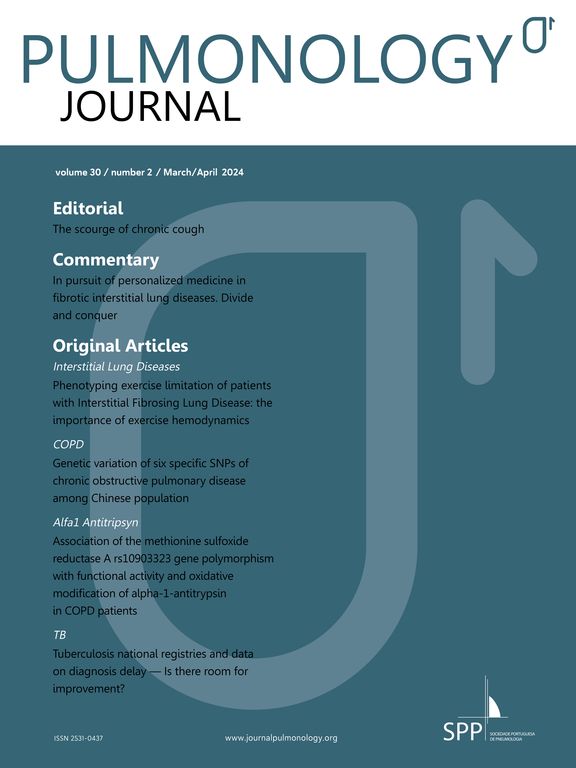Bronchiolitis obliterans organizing pneumonia (BOOP) is a physiopathologic syndrome associating suggestive clinical and imaging features with histopathologic studies showing buds of connective tissue in the lumen of the distal pulmonary airspace.
The aim of the study is a retrospective review of all patients with BOOP diagnosed in the Pulmonology Unit of Coimbra Hospital Centre (CHC) between 2000 and 2005.
Eleven cases (6 female and 5 male) with mean age 54.8 years were diagnosed. Ten patients were non-smokers and one was an ex-smoker. The mean duration of symptoms was 62.1 days with the initial symptoms dyspnea (8), cough (7), fever (5) and weight loss (2). Nine patients had been given multiple antibiotics, crackles were heard in 6, fever was detected in 6 and dyspnea in 5. Chest X-ray showed bilateral alveolar opacities in 6, focal consolidation in 3, multiple bilateral nodular opacities in 1 and linear opacities in 1. Lung function, performed in 7 patients, showed a reduction in the diffusion capacity in 5. BAL was performed in 8, and all revealed an increase in the percentage of lymphocytes, with low CD4/CD8 in 4. Diagnosis was obtained by pulmonary biopsy performed by TBLB (7), VATS (2) and TTLB (1). Systemic corticosteroids were given in 9 patients. Evolution was favourable in 10 and one patient died.
The authors emphasise the time symptoms took to develop, the failure of multiple antibiotics, agreement between symptoms and imaging with those published in the literature, the increased lymphocytes in the BAL, the usefulness of TBLB and the good response to corticosteroids.
A bronquiolite obliterante com pneumonia organizada (BOOP) é uma entidade clinicopatológica que associa clínica e imagiologia sugestivas à evidência de cilindros de tecido conjuntivo no lúmen dos espaços aéreos distais.
Procedeu-se à análise retrospectiva dos casos de BOOP diagnosticados no Serviço de Pneumologia do Centro Hospitalar de Coimbra (CHC) entre 2000 e 2005.
Foram diagnosticados 11 casos (6 doentes do sexo feminino e 5 do masculino); média de idades de 54,8 anos; 10 não fumadores e 1 ex-fumador; tempo médio de evolução de 62,1 dias; os sintomas iniciais foram dispneia (8), tosse (7), febre (5) e emagrecimento (2); 9 doentes cumpriram antibioterapia prévia; as alterações do exame físico eram: crepitações à auscultação do tórax (6), febre (6) e dispneia (5); a telerradiografia do tórax mostrou opacidades alveolares difusas bilaterais (6), opacidade alveolar focal unilateral (3), nódulos pulmonares múltiplos bilaterais (1) e padrão intersticial difuso bilateral (1); o EFR foi realizado em 7 doentes, apresentando baixa DLCO/VA em 5; o LBA foi realizado em 8 doentes, apresentando todos alveolite linfocítica e CD4/CD8 baixo em 4; o diagnóstico foi obtido por BPTB (7), VATS (2) e BPTT (1). Foi instituída corticoterapia sistémica em 9 doentes; a evolução foi favorável em 10; um doente faleceu.
Os autores destacam o tempo de evolução dos sintomas até ao diagnóstico, a falência de múltiplos antibióticos, a concordância dos sintomas e alterações radiológicas com os habitualmente descritos na literatura, a alveolite linfocitica no LBA, a rentabilidade da BPTB como técnica de diagnóstico e a boa resposta à corticoterapia.






